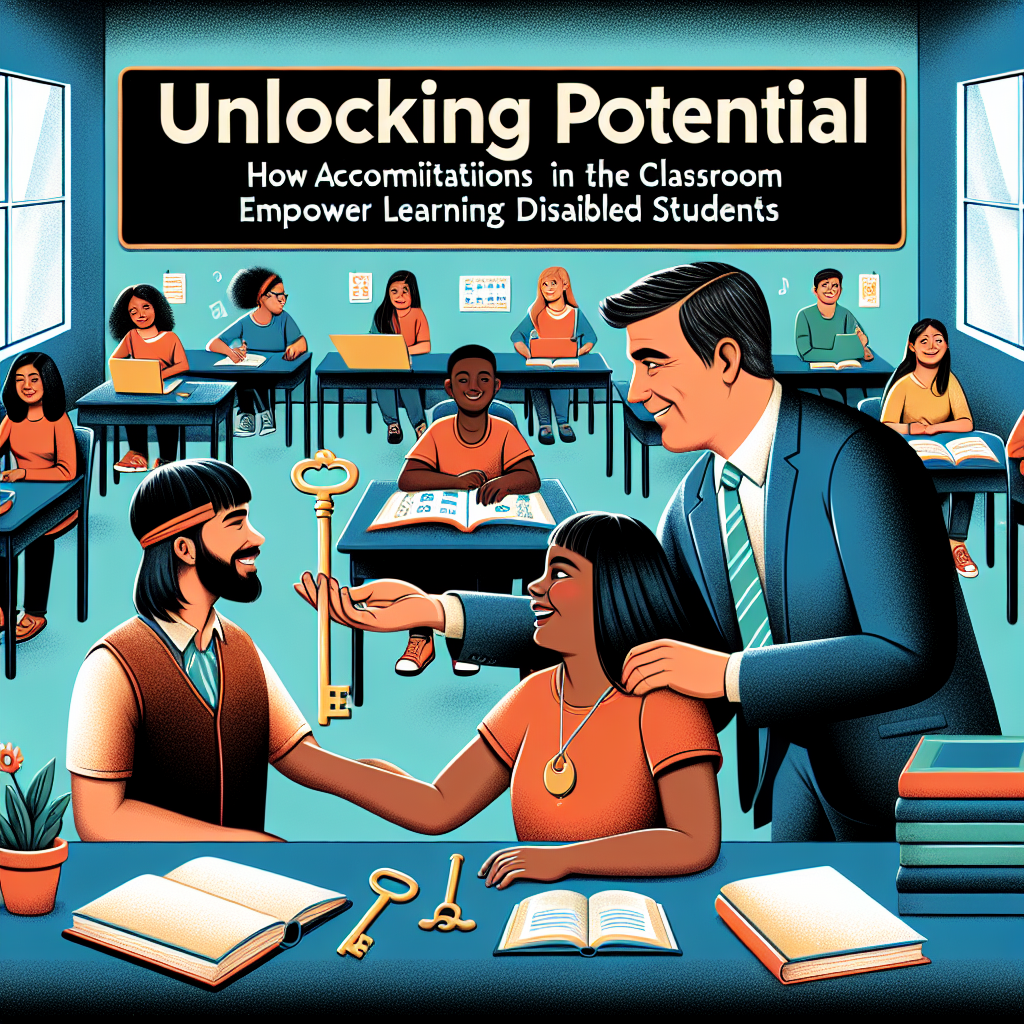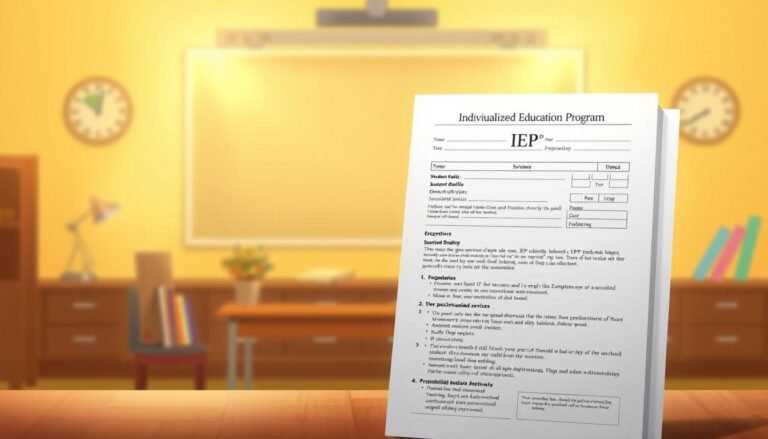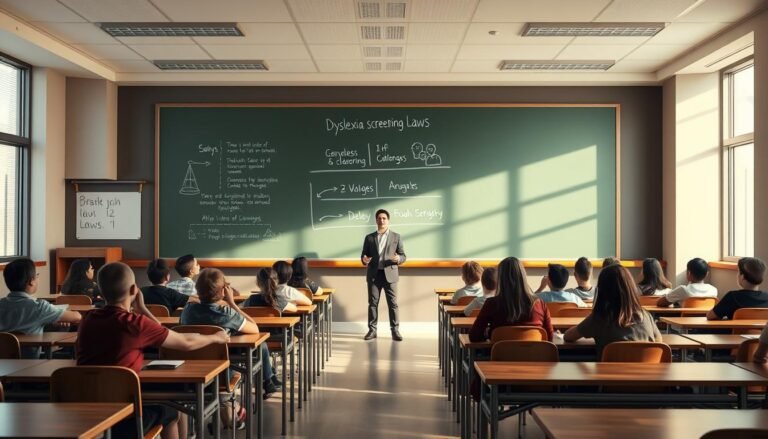
Unlocking Potential: How Accommodations in the Classroom Empower Learning Disabled Students
Introduction
Every child deserves an education tailored to their unique needs and abilities. However, for many students with learning disabilities, traditional classrooms can present significant barriers to their success. Unlocking Potential: How Accommodations in the Classroom Empower Learning Disabled Students aims to illuminate the transformative power of educational accommodations, showcasing how they can turn obstacles into opportunities. In an era where inclusivity drives educational reform, understanding the strategies that empower learning disabled students is not just important—it’s essential.
Imagine a classroom where every student thrives, where differences are celebrated, and potential is unlocked. This vision is achievable through thoughtful accommodations that meet the diverse needs of all learners. In this comprehensive article, we will explore various strategies, share inspiring case studies, and provide insights into how educators can facilitate an environment where learning disabled students not only survive but flourish.
Understanding Learning Disabilities
Before delving into specific accommodations, it’s vital to understand what learning disabilities entail. Learning disabilities (LDs) are neurological disorders that affect the brain’s ability to receive, process, store, and respond to information. Common types include:
- Dyslexia: Difficulty with reading and language processing.
- Dyscalculia: Challenges with mathematics.
- Dysgraphia: Difficulties in writing, spelling, and organizing thoughts on paper.
- ADHD (Attention Deficit Hyperactivity Disorder): Problems with attention, hyperactivity, and impulsiveness.
Understanding these disabilities is key for educators aiming to unlock the full potential of their students. Each student brings a distinct set of strengths and challenges—it’s our responsibility to ensure that these differences are acknowledged and address appropriately.
The Power of Accommodations
Accommodations are modifications or adjustments to teaching methods, materials, or assessments that enable learning disabled students to engage more effectively in the classroom. They are not about altering the learning goals but rather about providing the necessary support for students to reach those goals.
Types of Accommodations
- Classroom Environment Adjustments:
- Flexible Seating Arrangement: Allowing students to choose seating that suits their learning needs—be it standing desks, wobble chairs, or floor cushions—can improve focus and comfort.
- Instructional Strategies:
- Multisensory Instruction: Employing visual, auditory, and kinesthetic techniques to engage students with various learning styles.
- Assistive Technology:
- Software and Devices: Tools such as speech-to-text applications, audiobooks, and graphic organizers can alleviate some of the difficulties students face.
- Assessment Modifications:
- Extended Time and Alternative Formats: Providing extra time on tests or offering oral assessments instead of written ones can recognize a student’s learning differences.
The Importance of Individualized Plans
Individualized Education Programs (IEPs) and 504 Plans are formal documents that outline specific accommodations for students with disabilities. These plans are crucial as they ensure that each student receives tailored support. Collaborating with teachers, parents, and support staff to create and update these plans can significantly impact a student’s educational experience.
Case Study: Sarah’s Story
Sarah, a 10-year-old girl with dyslexia, struggled with reading since kindergarten. Traditional teaching methods left her feeling lost and frustrated. However, her teacher introduced multisensory instruction techniques and utilized audiobooks to complement reading assignments. Additionally, Sarah received extra time on reading assessments. Within a year, she transformed from a hesitant reader into a confident one, showing remarkable improvement in her academic performance. Sarah’s story exemplifies Unlocking Potential: How Accommodations in the Classroom Empower Learning Disabled Students.
The Role of Teacher Training
To effectively implement accommodations, educators need ongoing training and support. Professional development workshops focused on understanding learning disabilities and effective strategies can empower teachers to cater to diverse learning needs. A well-prepared educator can make a world of difference in a student’s learning journey.
Chart: Benefits of Classroom Accommodations
| Accommodation Type | Benefits |
|---|---|
| Flexible Seating | Increases comfort and focus |
| Multisensory Instruction | Enhances engagement and comprehension |
| Assistive Technology | Offers tailored support for learning tasks |
| Extended Time | Reduces anxiety during assessments |
Emotional and Social Empowerment
Accommodations not only focus on academic performance; they also play a critical role in emotional and social development. When students receive the necessary support, they are more likely to develop a positive self-image, build friendships, and engage in classroom discussions.
Case Study: Michael’s Journey
Michael, diagnosed with ADHD, often felt isolated due to his impulsive behavior and struggles to stay on task. His school implemented a buddy system where students worked in pairs to keep each other focused. Additionally, Michael’s teacher integrated regular breaks into his schedule, allowing him to reset and thereby reduce anxiety. Over time, Michael not only improved academically but also formed meaningful friendships—demonstrating how Unlocking Potential: How Accommodations in the Classroom Empower Learning Disabled Students promotes social inclusion.
Collaborating with Parents and the Community
Involved parents and caregivers can significantly contribute to a student’s success. Schools must establish strong partnerships with families, providing them with resources and guidance on how to support their children at home. Community initiatives that promote awareness about learning disabilities can further foster an inclusive educational environment.
Actionable Strategies for Parents
- Communicate Regularly: Keep the lines of communication open with teachers. Discuss any changes in behavior or challenges at home that may affect learning.
- Create a Structured Home Environment: Establish a quiet and organized workspace for studying, with clear routines to help manage distractions.
- Celebrate Progress: Recognize even small achievements to build confidence and motivation.
Conclusion
The journey toward unlocking potential for learning disabled students is one paved with empathy, understanding, and active engagement from educators, families, and the community. By embracing and addressing the unique challenges faced by these students through thoughtful accommodations, we not only enhance their academic performance but also nurture their emotional and social growth.
In an inclusive classroom, every student has the opportunity to succeed, leading to a generation of learners who are empowered and inspired to reach their fullest potential. Let us continue to advocate for change, prioritize educational equity, and ensure that accommodations remain at the forefront of our educational approach.
FAQs
1. What are accommodations in education?
Accommodations are modifications to teaching methods, materials, or assessments that allow students with learning disabilities to engage more effectively in their learning process.
2. How can I support my child with a learning disability at home?
Establish a structured homework routine, create a quiet study environment, and maintain open communication with teachers about your child’s progress.
3. What is an Individualized Education Program (IEP)?
An IEP is a formal document that outlines special education services and accommodations for a student with a learning disability.
4. How do accommodations differ from modifications?
Accommodations change how a student learns, such as providing extra time or different formats for assessments, while modifications change what a student is expected to learn.
5. Can accommodations help students without learning disabilities?
Yes, accommodations can benefit all students by promoting various learning styles and increasing engagement.
6. What role do teachers play in implementing accommodations?
Teachers are crucial in identifying student needs, developing individualized plans, and using specific strategies to create an inclusive learning environment.
By understanding the power of accommodations, educators can truly unlock the potential of learning disabled students, paving the way for success in and out of the classroom.
















